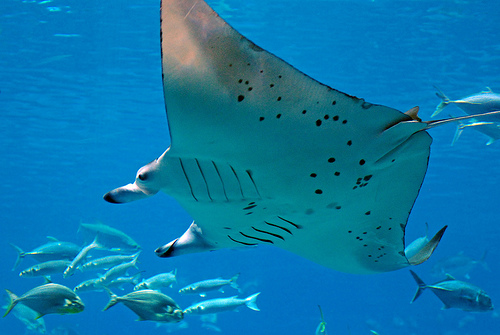I wrote this post for a more general audience at BlogHer, but the post ended up including a nice round-up of links, so I’m sharing it here as well, along with a couple of provocative questions near the end of the post.
Late last year, the American Association of Museums released a discussion paper titled Museums & Society 2034: Trends and Potential Futures. The report looked back 25 years to 1984 as it predicted what museums will look like 25 years from now. Specifically, the 20-page report examined “demographic trends, changes in the geopolitical and economic landscape, shifts in technology and communications, and the rise of new cultural expectations.”
For example, after pointing out that a larger percentage of the U.S. population will be senior citizen in 2034 than are seniors now, the report suggests museums will not only be accessible to people using walkers or wheelchairs, but will sport larger exhibit labels and will incorporate aspects of universal design as a matter of course. In another example, volatile energy prices will lead museums to
educate the public on how past societies coped and adapted to tectonic shifts in their resources. They will help society learn from history as we cope with a new era of more expensive energy, lower consumption, carbon constraint and climate change. Museums have uniformly adopted green design as a mark of excellence, leading by example and integrating green practices into operations. Some museums operate joint storage facilities designed to minimize energy costs while providing appropriate climate control. More museums establish satellite locations to serve outlying communities, reducing their audiences’ need to travel.
Some of the report’s predictions will come to pass much earlier, I hope. The eco-trends are notable, but even more relevant at this moment, I think–as I contemplate the possibility of my own job falling before the scythe of university budget cuts–is the suggestion that museums become resources for “communities with job losses reinvent themselves in the new knowledge-based economy.” Yes, please–sign me (and the rest of the giant University of California community) up! Indeed, Elaine Heumann Gurian has suggested that museums might serve some of the same functions as soup kitchens in the current downturn. (Be sure to read Marjorie Schwarzer’s reply to Gurian for some very interesting historical context.)
But in order to understand the future of museums, we first must look at their present. And it ends up that even museums aren’t at all in agreement over what constitutes a museum. As Elizabeth Merritt, director of the Center for the Future of Museums wrote today,
What is a museum? As a group, do we really have one unique element or set of characteristics that unite us as a field, while distinguishing us from other types of organizations? Are children’s museums (three quarters of which do not own or use collections) really in the same business as art museums? What about science centers? How much do museums that primarily exist to serve the general public have in common with museums like the Peabody [Museum of Natural History], where the majority of the collections serve a specialized community of researchers?
And collections are just one parameter—there are many others, some very complex and hard to characterize. For-profit museums like the International Spy Museum or the Museum of Sex look just like any other museum to their visitors, but their governance, accountability, and regulatory environment are so different that the National Standards and Best Practices for U.S. Museums don’t cover them.
No discussion of the present and future of museums would be complete without a mention of the following issues:
- What exactly is the function of a museum, anyway?
- The place of amateurs in museums and the (imagined and real) tensions between these folks and the museum’s resident content experts, curators
- Crowdsourcing in museums
- Connecting with community
- Handheld devices, mobile content, and interaction between the virtual, the real, and the augmented
- Matching the degree of innovation offline with the amount of innovation online. (See also this museum response.)
- The place of digital artifacts
- The usefulness and place of gaming in the museum
I think it’s awesome that women are doing so much of the thinking about and planning for the museum of the future and the future of museums. Do you think women think and talk about museums differently than do men because we experience the world in different kinds of bodies?
How do you envision the museum of the future? What do you want your experience to be in and with museums? And how–if at all–would you like to see museums involved in your community?
